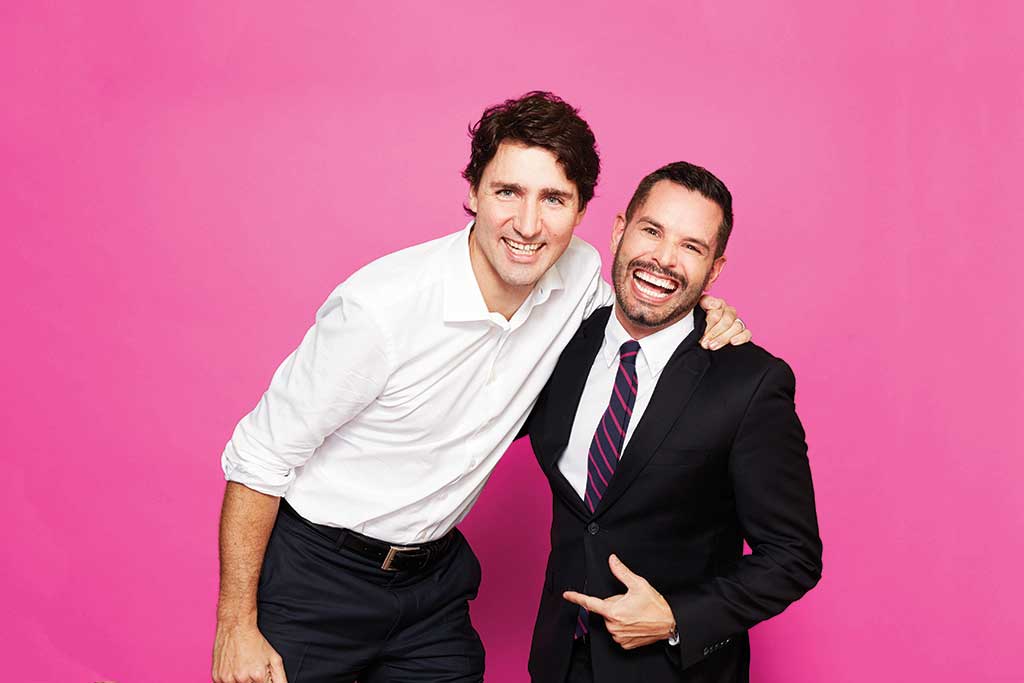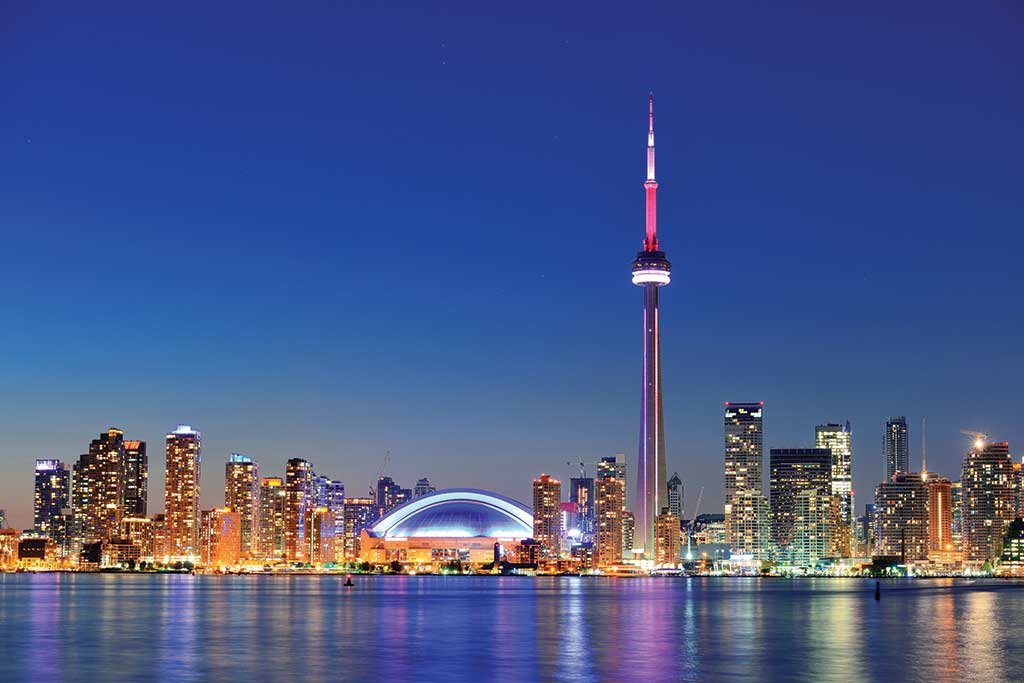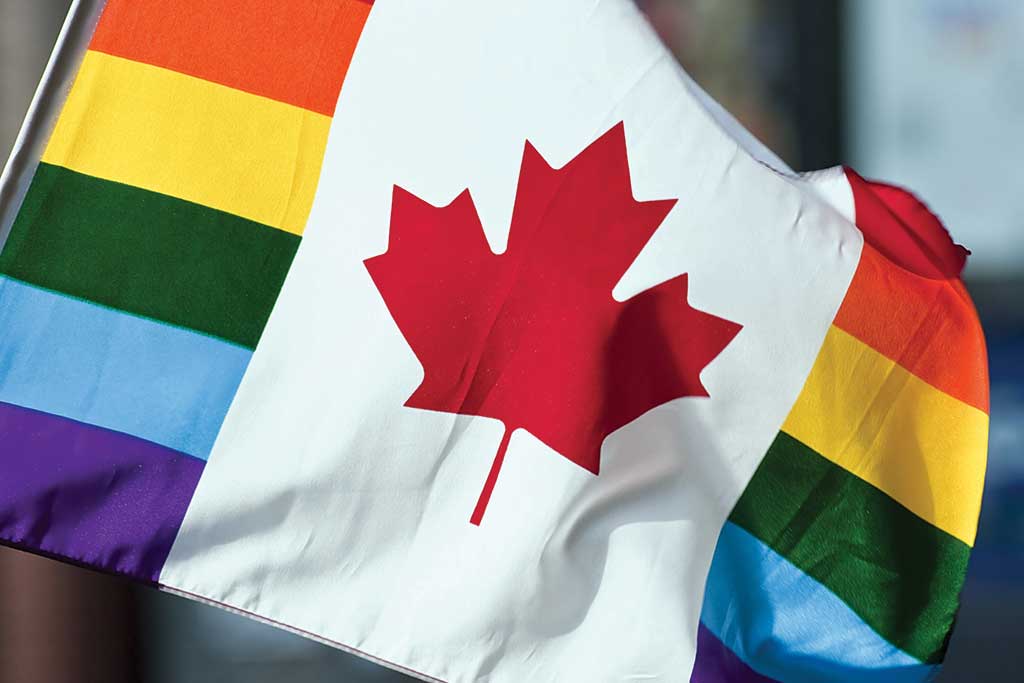In April of this year, I joined ten US meeting and event planners for a three-day “Men About Town” experience organized by Tourism Toronto. It was my seventh excursion to Toronto since first visiting two decades ago, and most entertaining, and eye-opening, by far.
My early ventures were of the in-out variety, and not the pleasurable kind, but as a dot.com “executive” somewhat at sea in the role. There were no real touches, just taxis, windowless meeting rooms, corporate hotels, and lobby bars, which did little to disprove Toronto’s then prevailing reputation as an Americanized, corporatized yawn. Or, as the late-actor Peter Ustinov once remarked, “Toronto is a kind of New York operated by the Swiss.”
Catalyzing my better appreciation of Canada’s largest and most diverse city was a 2012 story by gay Montréal-based journalist Richard “Bugs” Burnett. “Sacre bléu!” exclaimed Burnett in the Montréal Gazette, describing his “fabulous long weekend” in the city. “It’s time Montréalers revisit Toronto, and give the Queen City a second chance.”

Justin Trudeau and Mathieu Chant
If a leading voice of sexier, raunchier Montréal was giving its seemingly vanilla rival the rainbow sprinkles, then it was high time for my own reassessment. From getting the royal treatment at the Ritz-Carlton’s Urban Spa & Salon and dining with celebrity Canadian Chef Donna Dooher at her acclaimed Liberty Village restaurant Mildred’s Temple Kitchen to getting henna tattoos and boogying with belly dancers at Moroccan-style BerBer Social, Toronto was fabulous.
My attraction to Toronto flowers with each visit, and new blooms galore dazzled me on this latest adventure. Culture in every category, from art and design to film and theatre to fashion and festivals, is world-class; half the citizenry was born outside of Canada, contributing to multi-hued humanity and an ever-expanding culinary scene; and from Graffiti Alley, paralleling Queen West, to the rainbows of the Church-Wellesley Gay Village, the Queen’s true colors are far from bland.
My visit began with the meeting of a major man about town of the moment, Mathieu Chantelois, now in his second year as executive director of Pride Toronto. Over beers in the 43rd-floor Club Lounge of the newly refurbished Sheraton Centre Toronto Hotel, Chantelois, spoke about his life, career, and vision for this year’s first-ever month-long Pride.
Born in 1973 and raised in a Montréal suburb, he schooled at a musical academy where classmates included close friend Rufus Wainwright. In 2000, with undergraduate and master’s degrees in journalism from Carleton University—with a break in between to “improve my English” in Sydney, Australia—he came to Toronto to work as a reporter. Invited to audition while covering Canadian Big Brother-style reality TV series U8TV: The Lofters, he won a spot and gained significant attention as the only openly gay cast member. Next was a hosting stint for Canadian LGBT cable TV channel PrideVision, before becoming editor of Le Magazine Cineplex, the French-language edition of Canadian movie theatre chain Cineplex’s monthly magazine. “Doing celebrity and A-list interviews was fun,” recalled Chantelois, “but I knew I had to do something more impactful.”

Original Toronto on Queen Street
With roles including sitting on the board of Montréal’s Divers/Cité and serving as director of marketing and communications for the Boys and Girls Clubs of Canada, Chantelois also chaired the board and worked as communications director for Toronto’s 519 Church Street Community Centre. From this preeminent Canadian LGBTQ support organization, established in the Village in 1976 and now simply named The 519, he answered the “calling” that led him to approach Pride Toronto for the executive director position, which he assumed in January 2015.
Over a decade earlier, in 2003, Chantelois and husband Marcelo Gomez-Wiuckstern were notably among the first same-sex couples wed at Toronto City Hall. As fate would have it, our window perch directly overlooked City Hall and Nathan Phillips Square, where the giant LED- illuminated “TORONTO” sign from the 2015 Pan Am and Parapan Am Games is installed. With two curving, asymmetrical towers wrapping around the UFO-like council chambers, City Hall looks like a human eye from above, and thus the nickname “Eye of Government.” The day they were married, however, eyes of scorn were about.
“It was such a joyful moment, being able to marry the man of my dreams,” said Chantelois as we gazed down at the site. “Then we walked outside.”
Awaiting them was a crowd of protestors. “Many were Americans, children included, bussed in for the occasion complete with Bibles, signs, and flags,” he said. “For our recessional, we got chants of abuse.”
No stranger to harassment and hate, Chantelois received anonymous insults and threatening messages while on U8TV: The Lofters— and worse still since joining Pride Toronto.
“I’ve received death threats, too,” said Chantelois, some resulting from his decision to include the Toronto chapter of Black Lives Matter as an official “honored group” in the 2016 Pride Parade. “It goes with the role, of course,” he continued, citing some sound advice he got from Reverend Brent Hawkes, pastor of the Metropolitan Community Church of Toronto and leading Canadian LGBTQ rights activist. “He told me that ‘if you are doing your job properly, 15 per- cent of the people will dislike your decisions.’”
By that measure alone, he is succeeding, for his plans for Pride Month and expanded city-wide programming (an idea “percolating” in his head for two decades, inspired by Sydney’s Gay and Lesbian Mardi Gras) has its share of detractors.
“The idea is to look more broadly at human rights, diversity, and unity within society at large,” said Chantelois, a tireless ambassador and fundraiser who has also earned widespread trust and support. “As a leader in the Pride movement, I believe we have the power to change the world—our job is to show the way.”
From the trans community and members of Black Lives Matter, to queer Middle Easterners and Syrian refugees (including a D.J.), to corporate sponsors and local cultural institutions, he is casting a wide net. “Our slogan is ‘You can sit with us,’ taken from Mean Girls,” he continued. “There is tension between those that want more parties and those that want more of a political and activist edge. Different stake- holders want to take Pride in different directions. My goal is to establish an inclusive, action-driven, transformational model that will influence future Pride celebrations around the world.”

Toronto. By Songquan Deng
How did this ground-breaking 36th edition of Pride Toronto turn out? My post-Pride conversation with Chantelois comes later, but after biding him adieu, it was time to hit the town.
Opening night was at the storied Westin Harbour Castle. After welcome cocktails and hors d’oeuvres at Savoury, the hotel’s intimate chef’s table concept, Executive Sous Chef Ryan Lamothe hosted a long table dinner in the adjacent event space. In 1977, back in the hotel’s Hilton days, this room housed Poseidon Restaurant—head- quarters, along with their upper-floor compound, for the Rolling Stones during their infamous stay here. After several Screwdrivers, visions of Keith Richards’ arrest here for heroin possession, plus 28-year old Margaret Trudeau entering the Stones’ suites in a white robe, came vividly alive. Toronto boring? Perish the thought.
Strong with vibes, too, was The Second City. Founded in Chicago in 1959 and counting late greats Mike Nichols and Joan Rivers among its early members, the legendary improvisational theater and sketch comedy troupe expanded here in 1973. Many enshrined in photographs on the lobby walls, alumni of this Toronto icon are comedy’s cream of the crop. Seeing each bright young star in their original days (Bill Murray, Dan Aykroyd, Martin Short, Catherine O’Hara, Eugene Levy, and others) brought big smiles.
After checking out the Mainstage Theater, where we saw an entertaining improv show that evening, we passed through Wayne Gretzy’s Restaurant, a Broadway-type diner filled with the Great One’s memorabilia and featuring a rooftop patio, en route to the upstairs John Candy Box Theatre. Part of Second City’s training center, this blank- canvas space features the small wooden stage from Second City Toronto’s original location. During our hour-long improv session, I thought of the ambition, talent, and guts it takes to be on that stage. Inspiring, too, were quotes on the stairwell walls, such as Bill Murray’s “If you come through the Second City training, I think you can do anything.”
Next up, manicures and cocktails at Her Majesty’s Pleasure on King West, a hybrid salon, café, boutique, and cocktail bar. Realized by Drake Hotel designer John Tong, the gleaming white interiors include a long marble beauty bar where I had the “Ultimate Manicure”: file, cuticle care, exfoliation, deep-hand and arm massage, scalp and shoulder massage, and polish—plus, a well-crafted old fashioned.


